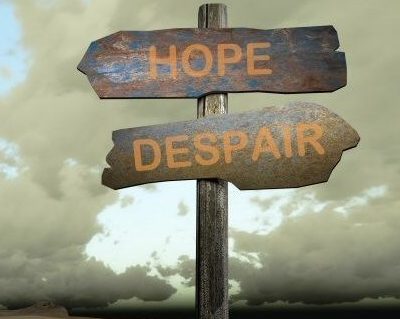The Atrocity of Alcoholism/Drug Abuse Among our Teens: It is Our Job to Protect Our Children

The Bible is very clear on the condemnation of drunkenness. It is our responsibility as Women of Christ to inform and education our teens to the danger of alcohol and drugs. They need to realize that every time they drink to excess or take drugs they are putting their lives in the hands of those around them. Are they trust worthy?
“What? know ye not that your body is the temple of the Holy Ghost which is in you, which ye have of God, and ye are not your own? For ye are bought with a price: therefore glorify God in your body, and in your spirit, which are God’s.” (1 Corinthians 6:19-20)
Over the past three decades, the American public has been heavily influenced by the power of media especially television and its ability to shape society. Drugs, alcohol, and tobacco are portrayed on television, in movies, in songs, and in other forms of media and have shaped the way society has developed different behaviors. The media also has established the guidelines as to what is acceptable and not acceptable in our society for years. Books and magazines, television, music, video games and advertising-influence us on our vision of drug use and abuse. The media has the potential to target the perceptions that teens and young adults hold on the acceptability of smoking, drinking and the use of drugs.
According to a study by researchers at the University of California, Berkeley, there is an increase in drug references in songs over the past two decades. Denise Herd, the author of the study and associate dean of students at the School of Public Health, identified that rap artists are giving positive glamorization toward the use of drugs. She studied the lyrics of rap music from 1979 to 1997 and claimed the lyrics of the drug references were negative and glamorized the use of drugs. The rappers caution the use of cocaine and crack yet they glorify the use of marijuana and other drugs popular with the Hip-hop lifestyle. Herd cautioned parents to listen to the music with their children and try to understand the wording and guide their children according to their beliefs. (Preidt, 2008).
According to a study from the Centers for Disease Control and Prevention in September, deaths from drug overdose and abuse now exceed deaths from motor vehicle accidents in the U.S. The statistics revealed the first time that drugs surpassed car accidents as one of the leading causes of death since the government first began tracking drug-related deaths in 1979. (Alvarez, 2012)
In the United States, 17.6 million people–about l in every 12 adults–abuse alcohol or are alcohol dependent
The World Health Organization (WHO) reports as of Feb, 2011 that alcohol is to blame for 2.5 million deaths annually
Alcohol is the leading risk factor in deaths of males aged 15-59
Relatively few of the more than 17 million US alcohol abusers receive treatment
Most alcoholics in the US seeking treatment are in the 26-34 age group
More than 10 million people abuse prescription medications in the United States
As of early 2011, Oxycontin and Xanax have become the 2 most abused prescription drugs
9% of high school seniors reported using Cocaine
A staggering half-a-million US children aged 9 to 12 are addicted to alcohol
In 2002, 2.6 million binge drinkers were between the ages of 12 and 17
Alcohol is the drug most frequently used by 12 to 17 year-olds
Young people who begin drinking before age 15 are four times more likely to develop alcoholism than those who begin drinking at or after age 21
One quarter of teens and young adults engage in binge drinking (Compass, 2012)
There are some really shocking statistics regarding drinking and college students. College students consume an estimated 4 billion cans of beer annually. Nearly half of all college students are Bing drinkers. College students consume an estimated 4 billion cans of beer annually. There are 75% of male students and 55% of female students involved in acquaintance rape had been drinking or using drugs at the time. (Hanson, 2009).
According to the National Institute on Drug Abuse Adolescent Substance Abuse Knowledge Base Prescription for Danger Physical and Mental Health from their fact sheet:
Alcohol kills 6.5 times more youth than all other illicit drugs combined.
Traffic crashes are the greatest single cause of death for all persons age 6–33. About 45% of these fatalities are alcohol-related crashes.
More than 60% of teens said that drugs were sold, used, or kept at their school.
Crystal meth has become the most dangerous drug problem of small town America. Kids between 12 and 14 that live in smaller towns are 104% more likely to use meth than those who live in larger cities.
Youth who drink alcohol are 50 times more likely to use cocaine than young people who never drink alcohol.
About 64% of teens (12-17) who have abused pain relievers say they got them from friends or relatives, often without their knowledge.
While rates of illicit drug use are declining, the rate of prescription drug use remains high. 15.4% of HS seniors reported non-medical use of at least one prescription medication within the past year.
In 2008, 1.9 million youth age 12 to 17 abused prescription drugs.
Around 28% of teens know a friend or classmate who has used ecstasy, with 17% knowing more than one user.
By the 8th grade, 52% of adolescents have consumed alcohol, 41% have smoked cigarettes, and 20% have used marijuana.
Teenagers whose parents talk to them regularly about the dangers of drugs are 42% less likely to use drugs than those whose parents don’t, yet only a quarter of teens report having these conversations.
There are many reasons why teens may try alcohol and drugs. Peer pressure is the number one reason and the accessibility of alcohol. Teen try to be accepted by their peer group so they can fit in. The teen also use alcohol and drugs as a coping mechanism for either physical or spiritual pain. Sometimes they just like the attention or the feeling the alcohol and drugs give them.
Signs parent can watch for as warning signs of alcoholism and drug abuse among their teens.
If there is a change in their academic performance or there is truancy in school attendance
If there is a change in their choice of friends.
If they are hanging out with a new crowd.
If the teen are being secretive
If the teen is overheard talking “drug slang” with their friends.
If the teen are burning incense to hid odors
If there is a noticeable mood swing or depression
If there is low self-esteem
If there is a disappearance of alcohol or if prescription meds start disappearing
If there is empty hairspray or liquid paper bottles this can be used as an inhalants
If their choice of clothing change to more drug related or a sloppiness that is out of character for the teen
If there is mental confusion, stupor or the teen cannot remember their last night party.
Physical look for fatigue, repeated health complaints, red and glazed eyes, and a lasting cough (American, 2011).
Parents are the first line of prevention of their teen using either alcohol or drugs. Education for both the parents and the teens are a must. The time for this is before you suspect your child has an alcohol or drug addiction. Before there is a problem the lines of communications must be open and the first step is to stay calm and open the lines of communication. Do not become over emotional or jumping to conclusions or accusative. You certainly do not want to “sugar coat” their use of alcohol and drugs.
There should be specific rules and limitations given to your teens these rules should be enforced. Make an effort to know who their friends are and if they go to a friend’s house, have them check in and require they provide the phone number of the parents who are responsible for watching over your teens. Remember the less free time the teen has, the less likely they will have to get into trouble. Encourage them to get involved in either sports or band. There should be parental supervision and parents should know where and with whom their teens are associating with. Alcohol and other drug use has been found to occur most often between the hours of 3 p.m. and 6 p.m., immediately after school and prior to parents coming home from work.
The Bible is very clear on the condemnation of drunkenness. It does not condemn the drinking of wine just the intoxication. There are references in the Old and New Testament both positive and negative. Paul tells us in 1 Timothy 5:23 23 “Drink no longer water, but use a little wine for thy stomach’s sake and thine often infirmities.” (Holy Bible). Here wine is not condemned as being without usefulness. Drinking brings in the sinfulness of men and the dangers of becoming controlled by strong drink, and by Christians being a stumbling block to others. (Achtemeier. 1985). It is the abuse of wine rather than the use of wine which is strongly condemned in the Scriptures.
The first account of intoxication is with Noah in Genesis 9:18-29. (Holy Bible). Noah was considered a righteous man by the LORD God in Genesis 7:1. (Holy Bible). Noah is a good example of the result of showing “nakedness.” Ham, the son of Noah and the father of Canaan, say his father’s nakedness and boasted to his brothers which dishonoring Noah greatly. It can be said that the drunkenness of Noah caused his son to sin and thus the curse on Canaan.
The Scriptures does not say if using alcohol is a sin or not; the answer to that question is not that simple. The Bible does tell us in 1 Corinthians 6:19 our body is the temple of the Lord a dwelling place for the Holy Spirit. (Holy Bible). It is wrong to hurt our bodies with alcohol because it prevents us from fully serving the Lord. All a Christian needs is faith in The LORD God as a helper that is available to reduce anxiety of life and gives confidence and self-esteem and can help a person find a better outlet than alcohol. (Benner, 1999).
It is the responsibility of the women of Christ to inform their teens it is the result of drinking that condemns a person. It is not the alcohol that condemns. If a person drinks to defy the Lord then it could be a sin. It is in the hearts of men that condemns and causes sin. Teen should be educated to the damage that drinking can cause. They need to realize that every time they drink to excess or take drugs they are putting their lives in the hands of those around them. Are they trust worthy?
References:
Achtemeier, P.J. (1985). Harper’s Bible Dictionary. San Francisco: Harper & Row.
Alvarez, Manny. (2012). Teen drug abuse becoming an epidemic, must be addressed. FoxNews.com Retrieved September 17,201, from http://www.foxnews.com/health/2012/05/02/teen-drug-abuse-becoming-epidemic-must-be-addressed/
American Academy of Child & Adolescent Psychiatry. (2011). Facts for Families. American Academy of Child & Adolescent Psychiatry No 3
Benner, D.G. & Hill, P.C. (1999). Baker Encyclopedia of Psychology & Counseling, 2nd ed., Grand Rapids, Mich. Baker reference library
Compass Interventions. (2012). Alcoholism & Drug Addiction Statistics. Retrieved September 18, 2012 from http://www.compassinterventions.com/alcohol-drug-statistics.html
Hanson, G.R. & Venturelli, P.J. & Fleckenstein, A.E. (2009). Drugs and Society. Sudbury, Massachusetts. Jones and Bartlett Publishers.
Holy Bible. (1988). The King James Study Bible. Nashville: Thomas Nelson Inc.
Preidt, R. (2008). Rap Music Glorifying Drug Use. U.S. News & World Report. April /1/08.
Cite Article Source
MLA Style Citation:
Holstein, Joanne “The Atrocity of Alcoholism/Drug Abuse Among our Teens: It is Our Job to Protect Our Children:.” Becker Bible Studies Library Jan 2015.< https://guidedbiblestudies.com/?p=1835,>.
APA Style Citation:
Holstein, Joanne (2015, January) “The Atrocity of Alcoholism/Drug Abuse Among our Teens: It is Our Job to Protect Our Children:.” Becker Bible Studies Library. Retrieved from https://guidedbiblestudies.com/?p=1835,.
Chicago Style Citation:
Holstein, Joanne (2015) “The Atrocity of Alcoholism/Drug Abuse Among our Teens: It is Our Job to Protect Our Children: .” Becker Bible Studies Library (January), https://guidedbiblestudies.com/?p=1835, (accessed).
Joanne B. Holstein is a Becker Bible Studies teacher and author of Guided Bible Studies for Hungry Christians. She has received her Master of Science degree in Psychology/Christian Counseling with honors from Liberty University. She is well-known as a counselor to Christian faithful who are struggling with tremendous burden in these difficult times. She is a leading authority on the history of development of the Christian churches and the practices and beliefs of world religions and cults.
alcohol leading risk factor danger of alcohol drink to excess Drug Abuse Among our Teens education teens power of media shape society take drigs television The Atrocity of Alcoholism

